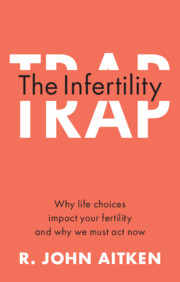Chapter 7
Published online by Cambridge University Press: 05 May 2022
Summary
The Janus faces of IVFIn vitro fertilization therapy was originally pioneered by Edwards, Steptoe and Purdy in order to help women suffering from bilateral tubal occlusion. The subsequent rise of Assisted Reproductive Therapy (ART) as a default treatment for many different forms of human infertility has been successful to the point that it has now become a major industry that exists, not just to meet the needs of its desperate patients, but to satisfy the aspirations of its shareholders. The sheer scale of the demand for ART services in the future may create several issues that will have to be addressed, including the cost of providing equitable access to such therapy and meeting the long-term health needs of the children born as a result. When conducted at scale, the ART industry will also serve to retain poor fertility genes within the population. When combined with the lack of selection pressure on human fertility in advanced affluent societies, this feature will ensure that the incidence of infertility continues to rise, fuelling the need for more ART services in a self-perpetuating spiral. This may be a boon for business but will become a millstone for Governments trying to provide equitable access to healthcare services, including ART.
- Type
- Chapter
- Information
- The Infertility TrapWhy life choices impact your fertility and why we must act now, pp. 238 - 269Publisher: Cambridge University PressPrint publication year: 2022

